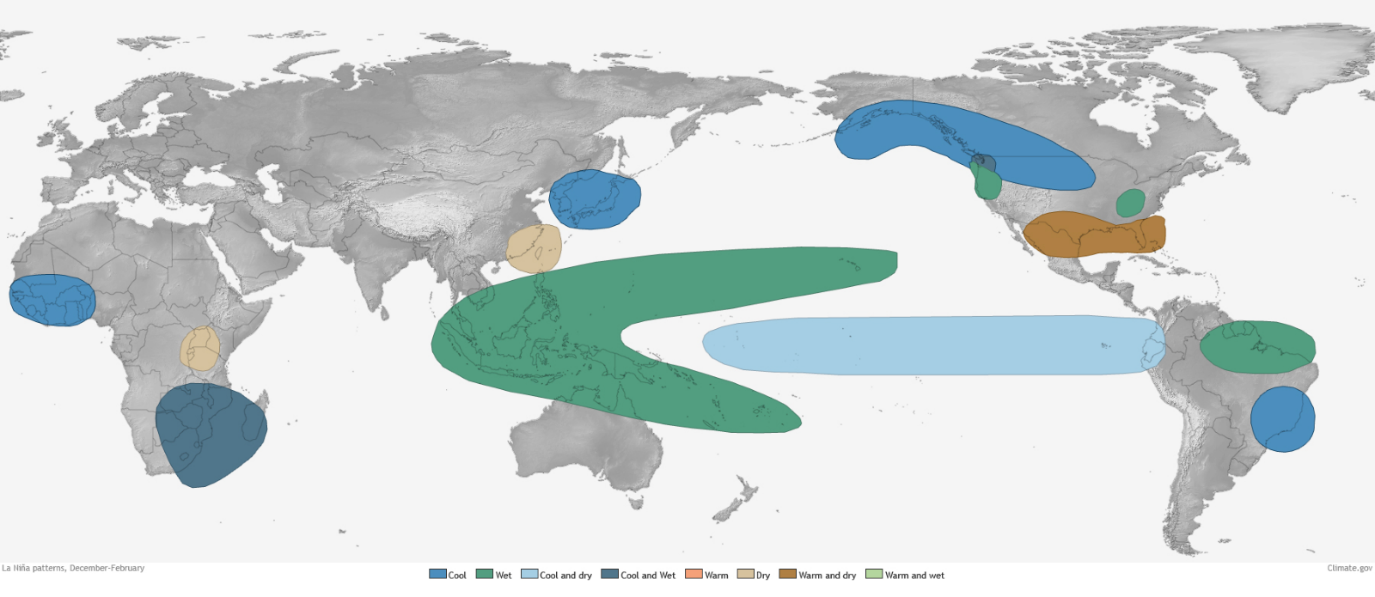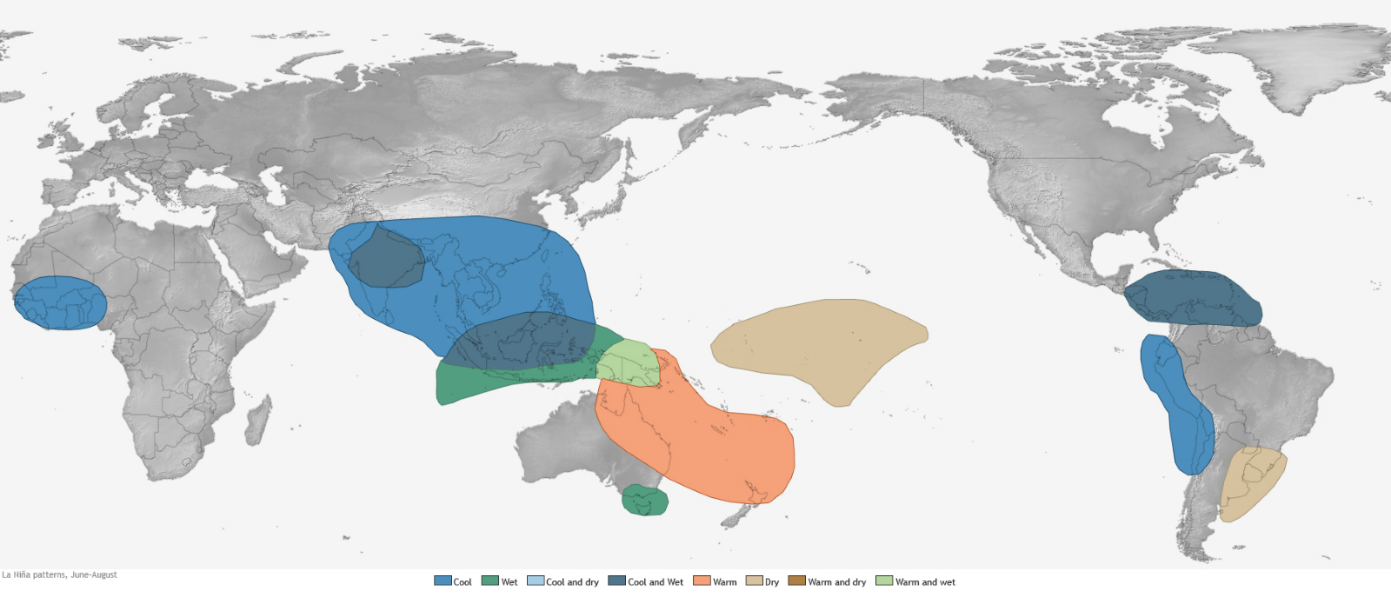In early June, the World Meteorological Organization (WMO) announced a probable transition from El Niño to La Niña in 2024. According to WMO forecasts, there is a 60% chance of La Niña developing between July and September, and this probability rises to 70% for the period from August to November.
The return of La Niña comes after the 2023-2024 El Niño episode amplified global warming. In fact, since June 2023, a temperature record has been broken every month, and 2023 was by far the hottest year on record. Global warming, mainly associated with greenhouse gas emissions from human activity, could therefore attenuate the cooling effect usually associated with La Niña.
The WMO also warns that, despite the return of this phenomenon, the annual global mean temperature between 2024 and 2028 is likely to be 1.1°C to 1.9°C higher than during the reference period from 1850 to 1900. Their projections indicate that the threshold of a 1.5°C increase over the pre-industrial era specified in the Paris Agreement has an 80% chance of being exceeded during one of these years, despite the return of La Niña. There is also an 86% likelihood that at least one of these years will become the hottest on record, dethroning 2023.
These observations, combined with the return of La Niña, whose advent will be confirmed in the coming months, underline the urgency of stepping up collective efforts to reduce GHG emissions and adapt to the effects of climate change.
Understanding La Niña
La Niña is a natural climatic phenomenon that occurs periodically in the Pacific Ocean and has a major influence on weather patterns in different parts of the world. It corresponds to the cold phase of an irregular cycle known as the El Niño/Southern Oscillation (ENSO), which encompasses La Niña and El Niño.
The La Niña phase of this cycle is characterized by the cooling of surface waters in the central and eastern equatorial Pacific. This cooling is associated with variations in tropical atmospheric circulation, including winds, pressure and precipitation. While La Niña tends to cool global temperatures, El Niño tends to warm them. The two phenomena therefore generally produce opposite climate effects, particularly between the tropics.
However, the effects of La Niña vary depending on the intensity and duration of the episode, the time of year at which it occurs, and its interaction with other modes of climate variability. These episodes are cyclical, lasting from 1 to 3 years, and have a major influence on global weather conditions.
The effects of La Niña on the global climate
The effects of La Niña on the global climate generally include below-normal temperatures in some regions of the world. For example, between December and February, cooler temperatures are generally observed in northwestern North America, West Africa and the China Sea region. Between June and August, Southeast Asia and western South America in particular may experience cooler weather.
This phenomenon also leads to above-normal precipitation in some areas and drier conditions in others. For example, increased precipitation could be expected in the far north of South America, Central America, the Caribbean and parts of Australia. Conversely, parts of South America and the southern United States could experience drier conditions, leading to severe droughts.
Unlike El Niño, La Niña episodes also tend to favour the formation of hurricanes in the Atlantic. Combined with record ocean warming induced by climate change, this can lead to very active and intense hurricane seasons. In fact, this is what the forecasts for the 2024 hurricane season suggest.
In Canada, La Niña can tend to make the winter colder in the west of the country. However, it has little influence in Quebec.


Figures 1&2: The impact of La Niña between December and February (top map) and between June and August (bottom map). Source: Global impacts of El Niño and La Niña | NOAA Climate.gov
The influence of climate change
As the latest IPCC report points out, quantifying the influence of climate change on ENSO remains a difficult task. However, it’s almost certain that ENSO will continue to be the main driver of interannual variability in the future. As a result, variability in regional precipitation will increase considerably by the second half of the 21st century.
The return of La Niña in 2024 could have significant consequences for the global climate. Although this phenomenon tends to cool global temperatures, global warming could modulate this effect. Appropriate preparation and adaptation are essential to minimize the consequences of the extreme weather events associated with La Niña.